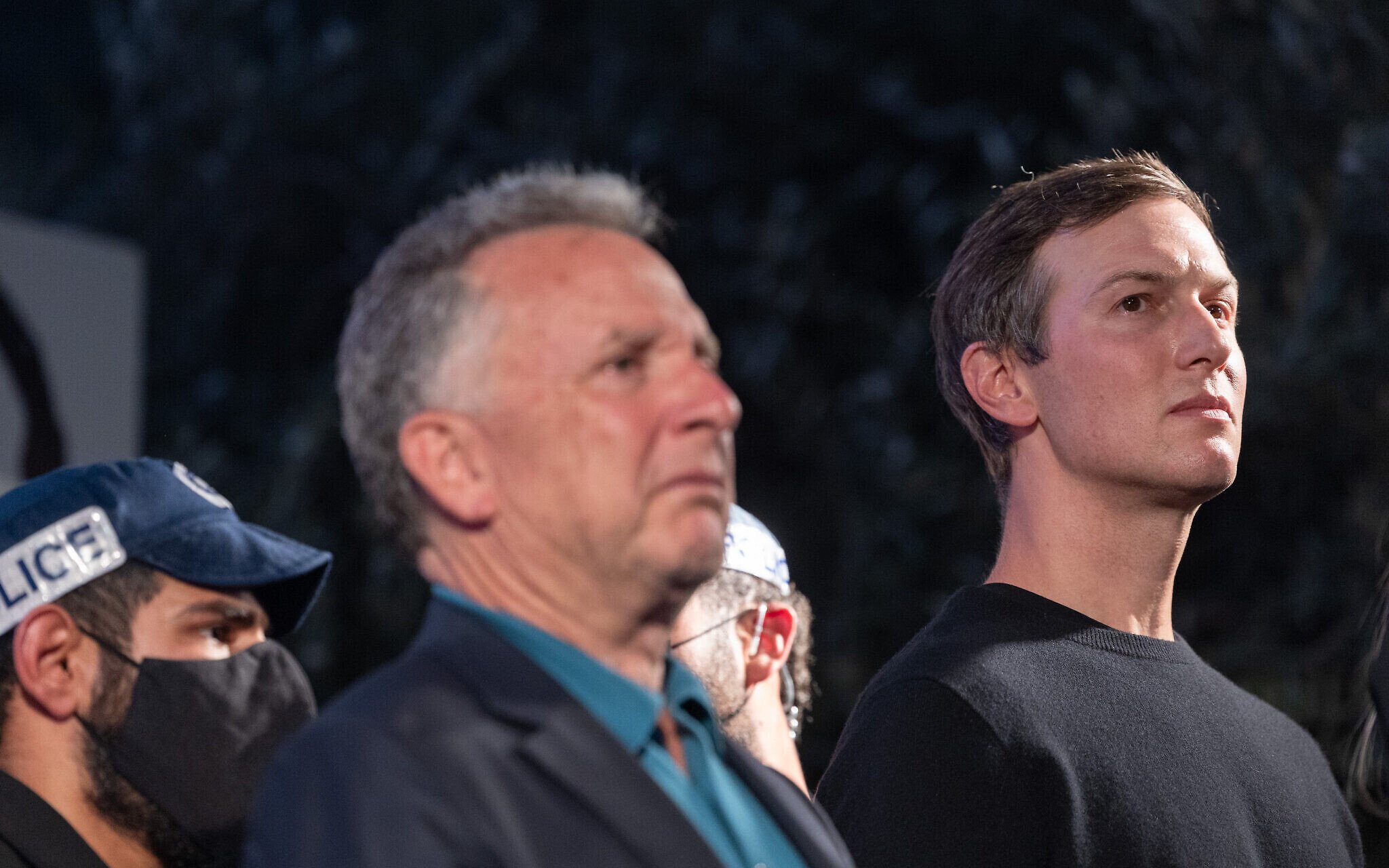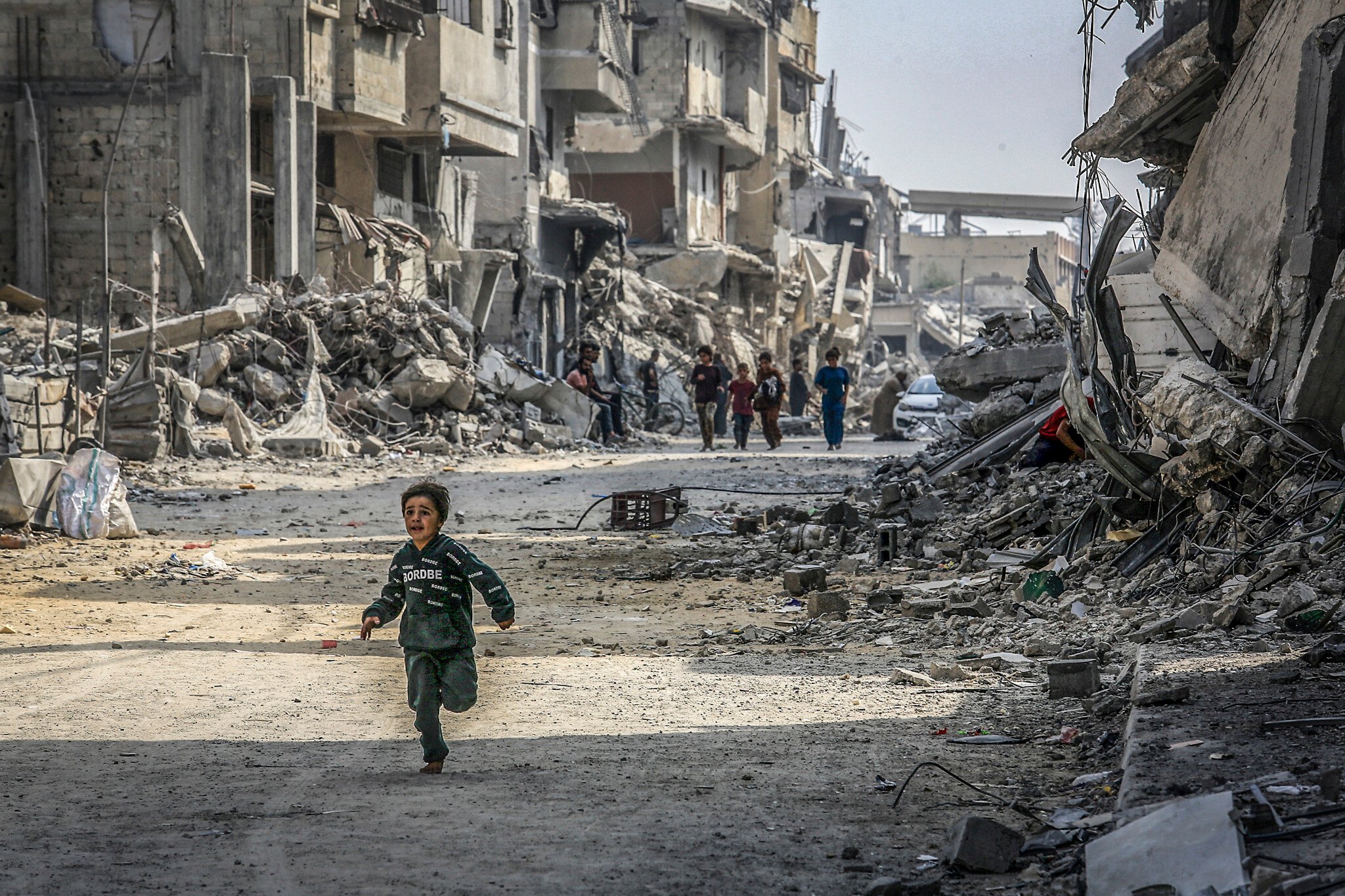Prime Minister Benjamin Netanyahu met with top White House adviser Jared Kushner at the premier’s office on Monday morning as Washington and Jerusalem continue to coordinate the ceasefire in Gaza and efforts to bring back the remaining slain hostages held by Hamas.
An Israeli government spokesperson said that Netanyahu and Kushner discussed disarming Hamas, demilitarizing Gaza, and ensuring Hamas does not have a future role in Gaza — all central components of the second phase of US President Donald Trump’s Gaza peace plan.
Strategic Affairs Minister Ron Dermer and Aryeh Lightstone, a senior adviser to US Mideast envoy Steve Witkoff, also participated in the Jerusalem meeting with Kushner, which took place ahead of an expected visit by Witkoff to Israel as part of continued efforts to advance Trump’s plan.
The meeting of senior Israeli and US figures came as talks are ongoing between the Trump administration and Israel over how to deal with the 100 to 200 Hamas terrorists who are currently holed up in tunnels in IDF-controlled territory beneath the city of Rafah.
Witkoff said last week that Washington was leaning on Israel to grant safe passage to the terrorists in exchange for the operatives giving up their weapons.
In response to a question about external pressure on Israel to allow the terrorists safe passage, the Israeli government spokesperson said Monday that they could not provide any updates on the matter, before adding that decisions on Israel’s policies in Gaza are being made “in full collaboration with President Trump and his team.”

Turkey said pressuring Hamas on hostages, seeking to free terrorists
Kushner’s arrival in Israel on Sunday night coincided with the return of the body of IDF officer Hadar Goldin, who was held in Hamas captivity since 2014 and released under the first phase of Trump’s Gaza plan, which requires the terror group to return all the hostages in Gaza in exchange for a partial IDF withdrawal and the release of nearly 2,000 Palestinian security prisoners, plus 15 bodies of Palestinians for each hostage’s body returned.
Multiple reports have indicated that the return of Goldin’s remains was tied to the negotiations over the evacuation of the trapped Hamas operatives, though there have been no official comments on the matter.
According to a Channel 12 report citing a senior Turkish official on Sunday evening, Ankara helped secure the return of Goldin, as it also works to secure the safe evacuation of the Hamas operatives.
In apparent contrast to the Turkish official’s claim, a separate, unsourced report by Channel 12 alleged that Turkey told Hamas to hold out for the freeing of the terrorists in the tunnels in return for Goldin’s body, but Israel refused to agree to such conditions.
Also on Sunday, a Palestinian source told the Kan public broadcaster that Turkey, with US backing, is exerting the main pressure on Hamas to release the bodies of the remaining four dead hostages in Gaza.

According to the source, Hamas is facing difficulties in returning some of the four bodies, which mediators understand and accept are beyond the terror group’s control.
The Prime Minister’s Office did not respond to a request for comment by The Times of Israel on the reports.
Speaking in front of the Knesset on Monday, Netanyahu said that Israel is determined to enforce the ceasefire agreements in Gaza and Lebanon “with an iron fist.” He added that Israel “is determined to bring back the four slain hostages left in Gaza,” crediting “diplomatic pressure to isolate Hamas that was applied by the US” alongside Israeli military efforts with bringing everyone else home.
The prime minister stressed that the war “has not ended,” promising that Hamas “will be disarmed. Gaza will be demilitarized. It will either happen the easy way, or it will happen the hard way. But it will happen.”
Last week, Witkoff confirmed reporting by The Times of Israel that the US was aiming to use the tunnel episode as a pilot project for Hamas disarmament under the second phase of Trump’s 20-point peace plan in Gaza.
The envoy said that the initiative, focused on the fighters located within IDF-controlled territory in southern Gaza in accordance with the ceasefire agreement, will serve as a “model” for the broader decommissioning and amnesty program under the plan. Netanyahu’s office has publicly pushed back against the idea of granting safe passage to the Hamas operatives, though a Middle East diplomat told The Times of Israel last week that Jerusalem has not ruled out the idea in private.
According to Hebrew media, the main option currently under consideration by the US is to find a third country to exile the fighters to — though no country has been found yet.

On Sunday, the military wing of Hamas vowed in a statement that its trapped fighters in Rafah will not surrender to Israel, saying that “in the lexicon of the Izz al-Din al-Qassam Brigades, there is no place for the principle of surrender or handing themselves over to the enemy. The mediators must find a solution that will ensure the continuation of the ceasefire.”
Hamas also said in the statement that the recovery of the remaining hostages’ bodies requires additional teams and technical equipment. The slain hostages are Israeli captives Ran Gvili, Meny Godard, and Dror Or, as well as Sudthisak Rinthalak, a Thai citizen.
No clear framework for stabilization force
Questions also remain on the establishment of an International Stabilization Force in Gaza, to be deployed under the second phase of Trump’s plan. The US is currently seeking to enshrine the second phase of the plan into international law via a UN Security Council vote.
On Monday morning, a senior Emirati official said the United Arab Emirates was not planning to join the force because it lacks a clear framework.
“The UAE does not yet see a clear framework for the stability force, and under such circumstances will probably not participate in such a force,” presidential adviser Anwar Gargash told a forum in Abu Dhabi.

Trump has claimed that many countries have been volunteering to contribute troops to the force to take on Hamas if necessary, though his claim contradicts what Arab diplomats have told The Times of Israel in private — that they do not want to send their troops into Gaza if it means clashing with Hamas, which has publicly refused to disarm.
As part of Trump’s plan, the US has been speaking to Azerbaijan, Indonesia, the UAE, Egypt, Qatar, and Turkey about possible contributions from those countries to the IDF of around 20,000 troops.
On Sunday, an Azerbaijani Foreign Ministry source said Baku also did not plan to send peacekeepers to Gaza, unless there is a complete halt to fighting there between Israel and Hamas.
Trump meets Syrian president
In the hours after Kushner met with Netanyahu, Trump hosted Syrian President Ahmed al-Sharaa for a landmark meeting at the White House.
Security was likely to be a top focus of the meeting, which came as the US is brokering talks between Syria and Israel on a possible security pact, and Washington is said to be planning to establish a military presence at a Damascus airbase.

In recent months, Israel and Syria edged closer to signing a breakthrough security arrangement. In late September, a senior US official told The Times of Israel that the deal was expected to be complete within the next two weeks, though since then, progress has appeared to hit an impasse.
The US is also working on normalizing ties between Israel and Saudi Arabia, with Trump saying last month he hoped Riyadh would “very soon” join other Muslim countries that signed the 2020 Abraham Accords normalizing ties with Israel.
Saudi Crown Prince Mohammed bin Salman is expected to visit the White House on Tuesday next week, though Riyadh is believed to be prioritizing defense cooperation and investment with Washington, as well as a viable path toward Palestinian statehood, before warming ties with Israel.

